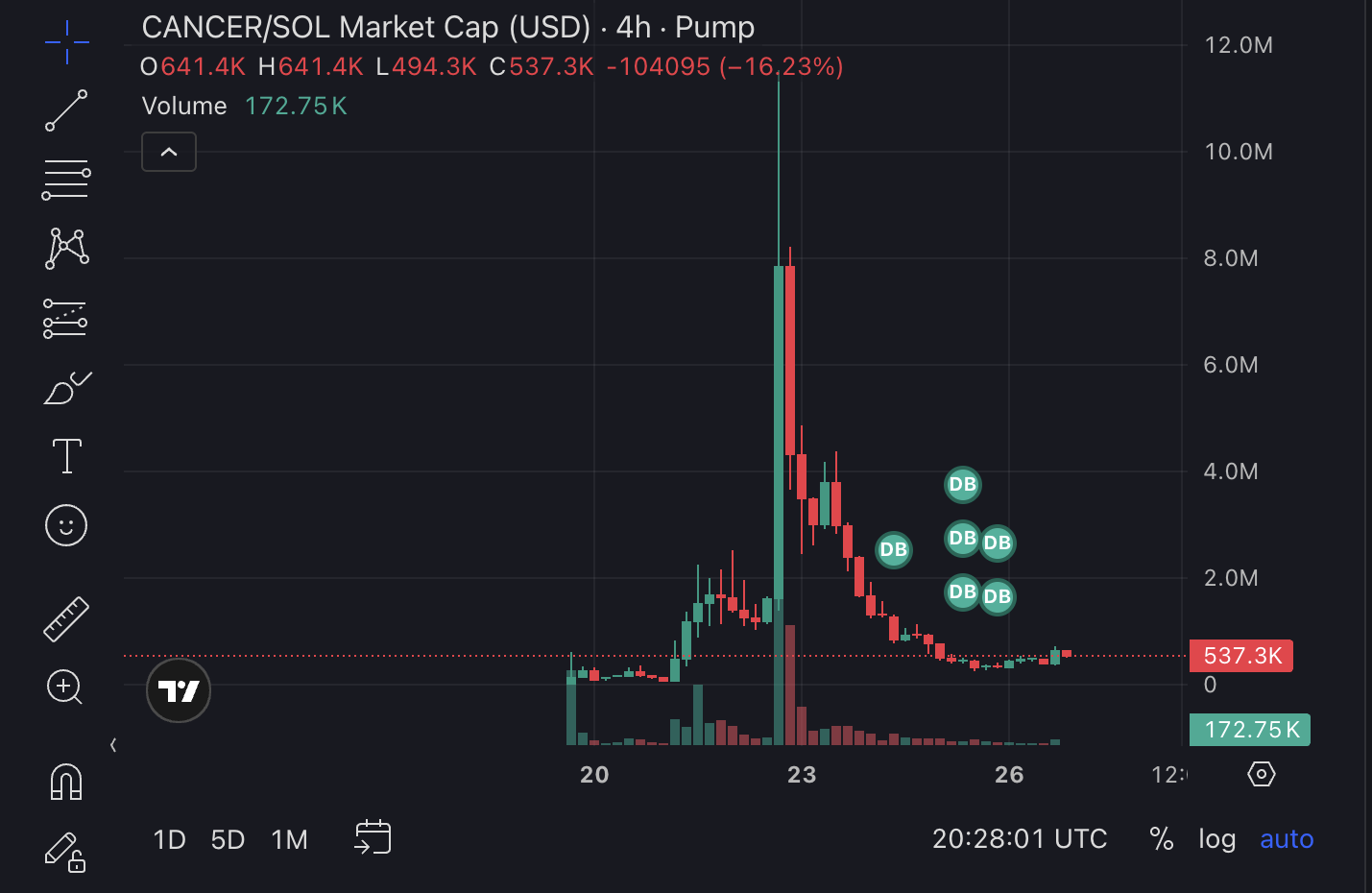The Wild Story of a Cancer Patient, Meme Coin, Scammers, And Pump.Fun
A cancer patient recently gained huge support from the crypto community after a scammer stole $32,000 from his treatment fund. He raised more than enough to pay for healthcare, and has since begun donating the surplus cash.
In today’s dark climate of increasing scams and political instability, incidents like this remind us of crypto’s lighter side. For one rare moment, the community came together to rectify a great injustice.
Crypto Fighting Cancer
Earlier this week, Steam removed a game, “Block Blasters,” after community sleuths warned that it contained crypto-stealing malware. The game had been active for months, but it took a massive burst of public outcry to get it removed.
The full story, however, is less well-known. It involves one cancer patient, a dangerous scam, and the crypto community coming together.
26-year-old Twitch streamer rastalandTV is a stage 4 cancer patient who turned to crypto to raise funds for treatment. He launched a CANCER meme coin on Pump.fun, and promoted it on his streams.
This token gained a moderate amount of traction, raising around $32,000 from the community.
Soon, however, a particularly jarring scam took place. A hacker gave this user an on-stream donation, requesting that he play Block Blasters, claiming that it was a little-known indie favorite.
In actuality, this game quickly drained all of RastalandTV’s crypto wallets, consuming the creator fees earned from his CANCER token.
This shocking incident led the community to rally on behalf of this streamer’s fight against cancer. Sleuths unmasked the perpetrator, a young Argentinian national living in Miami, and managed to compel Steam to remove Block Blasters and other crypto malware games.
Generosity All Around
Moreover, the crypto community managed to pump CANCER to new heights. Its market cap briefly reached a sum just under $8 million before rastalandTV announced that he had enough resources to continue paying for treatment.
Naturally, this led interest to diminish, albeit not completely.
 CANCER Market Cap. Source: Pump.fun
CANCER Market Cap. Source: Pump.fun
Since making this announcement, this Twitch streamer has begun donating the surplus proceeds to other charitable donations.
On top of major contributions to cancer research institutions, rastalandTV has also been using his crypto in a mutual aid campaign, giving assistance to other terminal patients in need.
In the last few weeks, the meme coin community has rallied in response to a few particularly appalling news items. The crypto community needs stories like CANCER, too.
Even though this episode highlights the ruthless and mercenary nature of today’s scammers, better impulses proved to win in the end.
Decentralized finance has a great power to bring people together and create positive change in the world. No matter how dark things may seem in today’s society, we always have the choice to help one another.
You May Also Like

Prediction markets, DATs, the fee switch, and Project Crypto

Zero Knowledge Proof Whitelist Open: How to Master The 24-Hour ICA Daily Token Distribution

